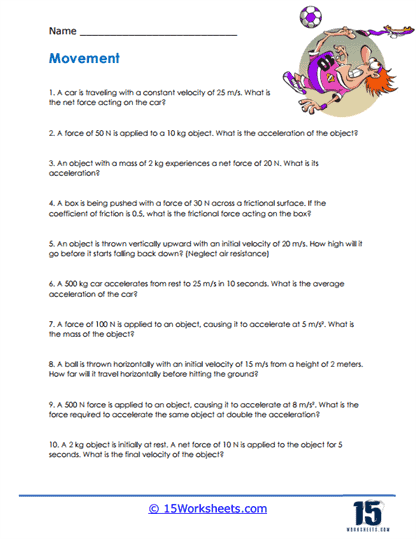Movement

Worksheet Description
The worksheet is centered on the principles of motion in physics. It addresses topics ranging from the relation between force and acceleration, to understanding how objects move under various forces and conditions. Through a series of questions, students are prompted to explore scenarios involving constant velocities, accelerations, vertical and horizontal throws, and the effects of frictional force. The sheet’s goal is to bridge the gap between theoretical knowledge and practical application, challenging students to apply motion-related formulae to real-life contexts.
To adeptly navigate this worksheet, students should begin with a solid grasp of Newton’s laws of motion and the basic equations relating force, mass, and acceleration. When faced with problems involving constant velocity, they should remember that net force is zero, as per Newton’s first law. For scenarios entailing throws or free falls, understanding of gravitational acceleration and kinematic equations will be vital. Lastly, when dealing with friction, students should be aware of how to compute frictional force and its impact on movement.
The primary objective of this worksheet is to bolster students’ comprehension and application of motion-related concepts in physics. It endeavors to instill a thorough understanding of how forces influence the movement of objects, whether it’s a car accelerating on a road or a ball being thrown. Through this exercise, students are also exposed to the significance of real-world factors like friction, which can often modify an object’s trajectory or speed. In essence, the worksheet offers a comprehensive view of motion, ensuring that learners can analyze and predict how objects move under different conditions.
